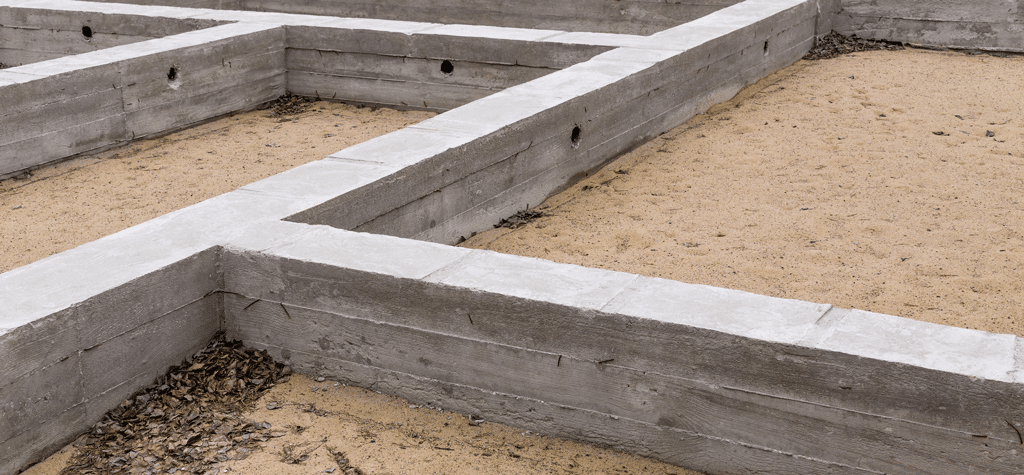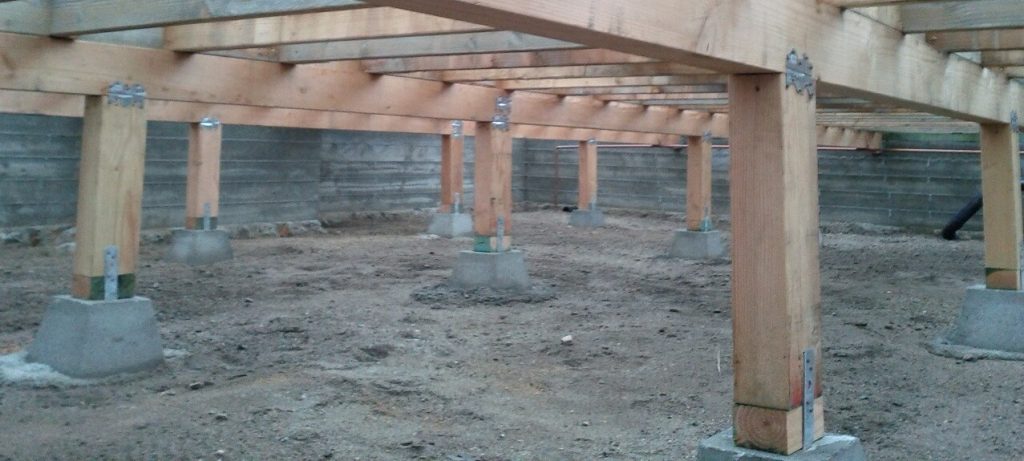A raised foundation, also known as a raised floor or pier-and-beam foundation, is a construction method that elevates a building above ground level. It typically involves a system of piers or columns supporting beams upon which the structure’s floor joists and subfloor rest, creating a crawl space underneath. This design offers benefits such as improved ventilation, accessibility for maintenance, flexibility on uneven terrain, and resistance to termite infestation.
However, raised foundations may incur higher construction costs and require periodic maintenance. Ultimately, the choice of foundation type depends on factors such as local building codes, soil conditions, climate, and personal preferences.
What are the components of a raised foundation?

A raised foundation, also known as a pier and beam foundation, typically consists of several key components:
Piers
Piers are the foundational support structures that transfer the weight of the building to the ground. They are typically made of reinforced concrete or masonry and are strategically placed to evenly distribute the load of the structure.
The size and spacing of the piers depend on factors such as the weight of the building, soil conditions, and local building codes. Engineers carefully design the pier layout to ensure adequate support and stability.
Beams
Beams are horizontal structural elements that span between the piers and support the floor joists or slab above. They distribute the load from the structure to the piers.
In addition, beams are often constructed of wood, steel, or reinforced concrete, depending on the specific requirements of the building and the engineer’s design.
Floor Joists
Floor joists are horizontal framing members that rest on top of the beams and provide support for the floor structure above.
Typically made of wood, floor joists are spaced at regular intervals and run perpendicular to the beams. They play a critical role in distributing the weight of the structure and providing a stable platform for the floor.
Subfloor
The subfloor is a layer of plywood or oriented strand board (OSB) that sits on top of the floor joists. It provides a smooth, level surface for the finished floor covering, such as hardwood, tile, or carpet.
In addition, the subfloor adds structural rigidity to the floor system and helps distribute loads evenly across the floor joists.
Insulation
In colder climates, insulation is often installed between the floor joists to prevent heat loss and improve energy efficiency.
Insulation materials such as fiberglass batts or rigid foam boards help maintain comfortable indoor temperatures and reduce heating and cooling costs.
Ventilation
Proper ventilation is essential for maintaining a healthy crawl space beneath the raised foundation. Vents are typically installed along the perimeter of the foundation to allow air to circulate freely.
Ventilation helps prevent moisture buildup, which can lead to mold growth, wood rot, and structural damage. It also helps regulate humidity levels and reduces the risk of pest infestations.
Skirting
Skirting is an optional component that encloses the crawl space beneath the raised foundation. It can be made of various materials, including wood, vinyl, or masonry.
Skirting improves the appearance of the foundation, provides protection against pests and debris, and helps maintain a clean and tidy crawl space.
Additionally, it can enhance energy efficiency by reducing drafts and air infiltration.
How do raised foundations offer advantages?

Raised foundations offer several advantages compared to other types of foundations, such as slab-on-grade or basement foundations. Firstly, they are adaptable to various soil types, particularly suitable for areas with expansive or unstable soil conditions. By elevating the structure above the ground on piers and beams, raised foundations minimize direct contact with the soil, reducing the risk of foundation settlement and damage.
Secondly, raised foundations provide improved ventilation and access. The crawl space beneath a raised foundation allows for ample ventilation, preventing moisture buildup and mold growth, while also providing easy access to utilities, plumbing, and electrical systems for maintenance and repairs. Additionally, raised foundations can help mitigate flood damage in flood-prone areas by elevating the structure above the ground level, reducing the likelihood of water infiltration into the living space during floods.
Moreover, they offer insulation and energy efficiency benefits, as insulation can be installed between the floor joists, improving energy efficiency and reducing heating and cooling costs. By minimizing heat loss through the floor, raised foundations help maintain more consistent indoor temperatures year-round.
Furthermore, raised foundations contribute to pest control efforts by deterring pests such as termites, rodents, and insects from entering the building. Properly installed skirting around the perimeter of the raised foundation further enhances pest control. Additionally, raised foundations offer flexibility in design and construction, accommodating uneven terrain, sloping lots, and varying building elevations more easily.
Lastly, when properly constructed and maintained, raised foundations can be highly durable and long-lasting, as the elevated structure is less susceptible to moisture damage, soil erosion, and other common issues affecting foundations built directly on the ground. Overall, these advantages make raised foundations a popular choice for residential and commercial buildings in many regions worldwide.
What are the disadvantages of raised foundations?
While raised foundations offer numerous advantages, they also come with some disadvantages:
- Cost: They can be more expensive to build because they need more materials and labor, like piers, beams, and subfloor.
- Crawl Space Problems: The space underneath needs regular care to stop issues like dampness, mold, and pests. If it’s not ventilated well or insulated enough, it can lead to expensive fixes.
- Less Flexibility in Design: Raised foundations might limit how a building looks or where things can go inside because of the need for extra supports like piers and beams.
- Weather Damage: In places with earthquakes or strong winds, raised foundations could get damaged more easily. Badly made ones might even sink or collapse during storms.
- Flood Risk: Even though raised foundations can help against floods, they aren’t always enough. If the area floods a lot, water can still get under and harm the building.
- Hard to Reach: Fixing things under a raised foundation can be tricky. Working in tight spaces needs special tools and skilled workers.
- Looks: Some people might not like how raised foundations look, especially if you can see the space underneath. The materials used to cover it up might also wear out and need fixing to keep it looking nice.
FAQ’s
What is the cheapest foundation for a house?
The cheapest foundation for a house is typically a concrete slab.
Is a pier and beam a raised foundation?
Yes, a pier and beam foundation is considered a type of raised foundation.
What is the difference between concrete slab and foundation?
A concrete slab is a type of foundation, whereas “foundation” refers to the overall structure supporting a building.
Which type of foundation is best?
The best type of foundation depends on factors such as soil conditions, local climate, and building requirements.
What are the 4 types of foundation?
The four main types of foundations are shallow foundations, deep foundations, pile foundations, and slab-on-grade foundations.
Final Words
When deciding on a foundation for your house, it’s important to consider various factors such as local building codes, soil conditions, climate, and personal preferences. Raised foundations offer benefits like improved ventilation, accessibility for maintenance, and resistance to termite infestation. However, they may come with higher construction costs and maintenance requirements. Ultimately, weigh these pros and cons carefully to choose the foundation type that best suits your needs and circumstances.
